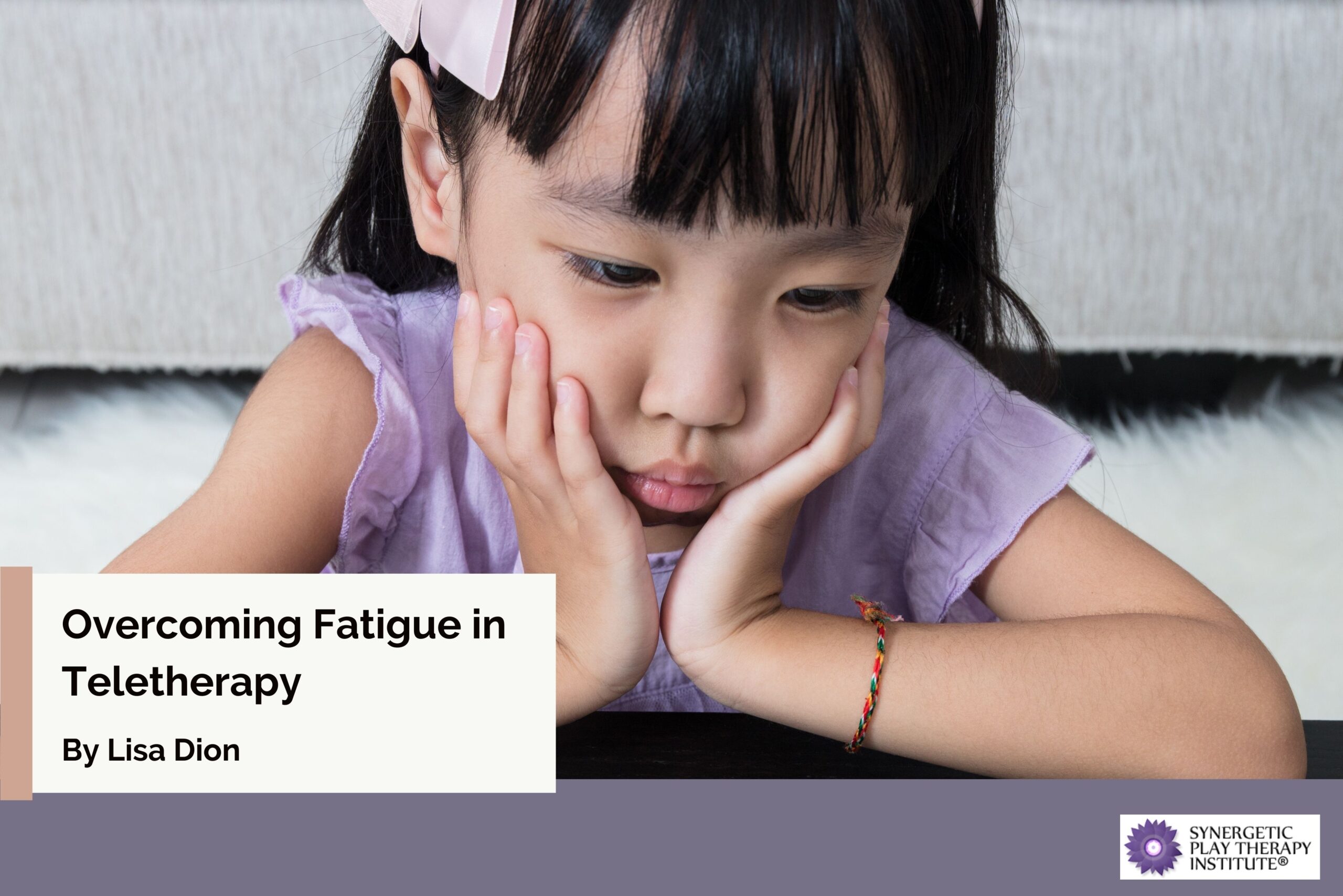By Lisa Dion, LPC, RPT-S
From learning how to connect with a child through a computer screen, engaging parents in new ways, and incorporating more directive play than perhaps many are used to, many play therapists may be feeling like they are back at square one learning how to do play therapy all over again. As play therapists work to learn and adjust to meet the needs of their child clients, an unexpected visitor has decided to also be a part of the play therapy experience- fatigue.
As someone who has been doing teletherapy for years, I can attest that the fatigue is real and I can also attest that there are many things that can help.
For starters, there are practical modifications that can make a world of difference. Adjusting the room lighting, sitting in ways that don’t put strain on your neck and back, staying hydrated and not being hungry are likely obvious solutions, but they don’t address the biggest reason play therapists feel exhausted as they switch to teletherapy.
Teletherapy is so acutely related to fatigue because it requires a higher level of attention and presence. Play therapists have to work harder to connect as they can’t rely on the nonverbal cues, body language, and tiny details that are used in the playroom to help orient and ground.
It is helpful for play therapists to remember how exhausting it was when they first started working with clients. How much focus and presence it took to attend. The switch to teletherapy is no different- there is indeed a learning curve. It is a learning curve of developing mindful awareness and presence.
Many play therapists benefit from either conducting shorter sessions or taking longer breaks between sessions. Some therapists have found that fewer sessions a day spread over more days of the week is helpful. But most importantly, it is essential to regulate during the sessions themselves. Things like taking your shoes off and feeling your feet on the ground, consciously breathing, stretching, squeezing your legs, rubbing your feet, and using a weighted blanket on your lap all help you stay connected to yourself allowing you to stay present for longer periods of time, not to mention they regulate the activation in your nervous system that you are experiencing during your sessions.
It is also okay to pause and move. It’s okay to take a moment and take a breath. It’s okay to name the anxiety and discomfort. It’s okay to sit at a desk or sit on the floor or spend the whole session moving between the two. It’s okay to modify sessions and try different things.
However play therapists choose to conduct their teletherapy sessions, the key to overcoming the exhaustion is the ability to regulate the body and stay connected to the self as the capacity to stay mindfully present and aware strengthens. And of course, remembering that the essence of teletherapy isn’t any different than the essence of all therapy: it is about the relationship.
Lisa Dion, LPC, RPT-S, is an international teacher, creator of Synergetic Play Therapy, founder and President of the Synergetic Play Therapy Institute, and host of the Lessons from the Playroom podcast. She is the author of Aggression in Play Therapy: A Neurobiological Approach for Integrating Intensity and is the 2015 recipient of the Association for Play Therapy’s Professional Education and Training Award of Excellence.






